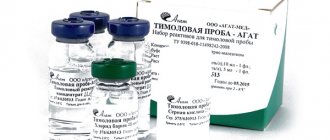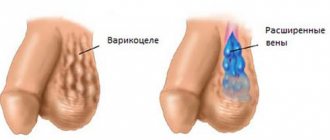If you are involved in medicine or sports, then you already know that this procedure is associated with changes in pulse and pressure in the circulatory system under the influence of changes in the position of the body in space. But how and why does our heart rate change, and how can athletes benefit from an orthostatic test?
This question remains open for many. So let's figure out what is really happening to our body, causing such a sharp change in heart rate, and how, by making daily observations, any athlete can determine even hidden indicators of overtraining and overload of the autonomic nervous system.
When our body is in a horizontal position, the forces of gravity act approximately equally on all its parts, and with a sharp change in position to a vertical one, blood outflows from the upper parts of the body and deposits (stagnation) of that same blood in its lower parts. The degree of severity of the body's reaction, expressed in changes in heart rate and pressure, indicates its current condition.
Reasons for measuring heart rate
If the blood stagnates in the veins of the legs that are large enough in volume, it returns to the heart far from being in its full composition. And our main circulatory organ needs to compensate for the lack of blood return in order not to disrupt the normal trophism (nutrition) of various tissues and organs of our body.
Since the flow of venous blood is not enough, an increase in heart rate becomes a compensatory mechanism, that is, the heart begins to work faster, hence the increase in pulse.
In sports, the orthostatic test is an extremely important indicator of the stability of the cardiovascular system under load, and if minor instability is acceptable for young athletes, then in the case of adult athletes there are no such concessions.
A sharp rise is stressful for our body, so the centers of the sympathetic department of the autonomic nervous system are overexcited. This is the department that monitors the state of our internal organs in stressful situations. Due to its excitement, the neurotransmitter norepinephrine is released into the blood, which also helps to increase heart rate.
Depending on the fitness of the athlete’s body and the general state of the autonomic nervous system, the orthotest indicators will deviate significantly or within normal limits. Thus, with minimal time and effort, it is possible to quickly diagnose the condition of athletes by analyzing pulse rate and pressure. More accurate data on sympathetic arousal is shown by studying heart rate variability (HRV or HRV) using specialized applications.
Indications for orthostatic test
The main objectives of an orthostatic test are to determine the relationship between observed symptoms and suspected diseases, clarify the diagnosis of latent hypertension, and help the doctor in selecting the dosage of certain medications. However, an orthostatic test is prescribed for diagnosis:
- coronary insufficiency;
- arterial hypertension;
- orthostatic hypotension;
- orthostatic tachycardia;
- dysfunction of the autonomic nervous system.
Also, samples of this type are necessary to monitor the patient’s condition during treatment with certain medications that cause circulatory disorders. Among such drugs are methyldopa, ganglion blockers, sympatholytics.
Test methods
There are the following methods for conducting an orthostatic test:
Active orthostatic test
The first, and most common among athletes, is an active orthostatic test. The idea is that they first take measurements in the person’s normal state, then measure the indicators while the person is in a horizontal position, after which the subject changes the position to a vertical one and the pulse is measured in a vertical position of the body over the next 3-5 minutes. Usually, the test is carried out in the morning, immediately after waking up.
Controlled test
The second, and most common among medical workers. It is used if there is a risk of fainting due to a sudden change in position.
This type of orthostatic test is also carried out first in a standard position, then in a horizontal position, but measurements of the vertical position are carried out much more interesting than in the first method. If, as mentioned above, a person has a risk of fainting, then the risks should be minimized, so the subject is tightly attached to the bed and, instead of actively rising, the position of the bed is changed, measuring the pulse immediately and 3 to 5 minutes after rising. The violation of the accuracy and meaning of the study is minimal, because the change in gravitational forces remains the same, only the action of the muscles changes. An example in the picture for clarity.
Modified orthostatic test
And the third, modified orthostatic test, is suitable for weakened people. The technique is almost identical to the active orthostatic test, but the distinguishing factor is that the subject stands one foot away from the wall on which he rests his back. With this research method, in order for the patient to achieve a state of significant relaxation, a roller with a diameter of 12-14 cm is placed under the sacrum, due to this the angle of inclination becomes approximately 75-80 degrees, as a result of which the required body position is achieved
Taking measurements
Measurements in the orthostatic test can be carried out both by classical heart rate measurement (on the wrist, on the carotid or femoral arteries), and using heart rate monitors, the functions of which, today, are found in smart watches, smart bracelets and applications.
In practice, working with an orthostatic test does not end with getting your heart rate (HR) three or four times in a week; you must be able to correctly evaluate the results obtained. To do this, you need to rely on normal pulse and blood pressure values.
Carrying out an orthostatic test
Modern medicine practices two types of orthostatic test
- A passive test is carried out with the patient on a special rotary table, eliminating the need to apply muscle force.
- An active orthostatic test involves the patient independently changing the position of his body. In both cases, the patient is connected to a series of sensors that continuously monitor vital physical parameters.
Active orthostatic test
This technique is the most common. During the examination, the patient takes a place on the orthostatic table and is connected to an automatic blood pressure measuring device. During the first 15 minutes, the patient's initial pressure and pulse are recorded at short time intervals in a horizontal body position. Then the patient is asked to take a vertical position for 10 minutes and then a horizontal position again. Pulse rate and blood pressure levels are recorded continuously every 1 to 3 minutes. In the absence of deviations, the patient does not experience any discomfort, and the heart rate and pressure do not increase compared to the recorded initial values by more than 20 beats per minute and 10 mm. Hg Art..
Passive orthostatic test
In addition to the principle of changing body position, a passive orthostatic test differs from an active one in that in this case it is possible to supplement the examination with indicators of the electrical activity of the heart using ECG sensors and blood supply to individual organs using plethysmography. The expanded capabilities of this type of test greatly increase the efficiency of the examination, as they allow the most minimal deviations to be accurately determined.
Sometimes, to assess the response of the cardiovascular system to changes in body position, in addition to these methods, pharmacological research methods are used. In this case, the orthostatic test is performed twice - before and after the use of medications.
Norm and results of pulse measurement
Normal heart rate is 60-80 beats/min. Changes in heart rate when changing position can be assessed at the following levels:
- from 0 to +10 can be considered an excellent result
- from +11 to +16 – good
- from +17 to +22 – normal
- more than +22 – already unsatisfactory
Deviations in the negative direction (i.e., slowing of the pulse during an orthostatic test) are also considered an unsatisfactory result.
Norm and results of pressure changes
| For men | For women | |
| Up to 20 years | 123/76 | 116/72 |
| From 20 to 30 years | 126/79 | 120/75 |
| From 30 to 40 years | 129/81 | 127/80 |
| From 40 to 50 | 135/83 | 137/84 |
| From 50 to 60 | 142/85 | 144/85 |
| 60 and older | 142/80 | 159/85 |
The normal deviation of systolic pressure (first indicator) is a deviation from 0 to +20
The normal deviation of diastolic pressure (the second indicator) is also a deviation from 0 to +20
For clarity, let's look at an example:
During the active test, the heart rate increased by 19 beats per minute, which corresponds to normal values
Further, the heart rate increased by 17 beats per minute, which again corresponds to the norm.
In addition to measuring heart rate, the minimum and maximum blood pressure was measured in both tests. Deviations above the norm are not observed; the subject has close to normal fitness of the cardiovascular system.
To save time, it is recommended to take blood pressure measurements once a week. Orthotest measurements of heart rate - at least 3-4 times a week in the active phase of the training cycle.
LONG-TERM PASSIVE ORTHOSTATIC TEST (TILT TEST) TO DETERMINE THE CAUSE OF SYNCOPAL CONDITIONS
The long-term passive orthostatic test (Tilt-test) has been performed in the Department of New Diagnostic Methods since 1991.
A long-term passive orthostatic test (LPOT) is performed on patients suffering from repeated bouts of loss of consciousness (fainting). Syncope (fainting) can be caused by diseases of the cardiovascular or nervous system, but can also be observed in the absence of any pathological manifestations in these systems. Among the many types of syncope, one can distinguish the so-called neurocardiogenic syncope . This term characterizes a group of clinical syndromes manifested by attacks of loss of consciousness and associated with the pathological reflex effect of the autonomic nervous system on the regulation of vascular tone and heart rate. This group also includes vasovagal fainting, which is a fairly common variant of short-term loss of consciousness and, according to various authors and in various categories of patients, accounts for from 28 to 93% of the total number of syncope.
Indications for performing a long-term passive orthostatic test are:
- clarification of the genesis of recurrent syncope and presyncope attacks of unknown cause;
- monitoring the effectiveness of therapy or an implanted artificial pacemaker (pacemaker) in patients with previously observed syncope.
If an examination carried out within the walls of the Institute of Cardiology, which included: a clinical examination, ECG, echocardiography, transesophageal and/or intracardiac electrophysiological study (to exclude the arrhythmic nature of fainting), a test with massage of the areas of the sinocarotid zones (to exclude carotid sinus syndrome), electroencephalography with provocative tests, examination by a neurologist, the cause of syncope has not been determined, the patient undergoes DPOP with continuous non-invasive (bloodless) monitoring of blood circulation parameters in mandatory combination with electroencephalography (EEG).
Contraindications for this study are:
- unstable angina;
- circulatory failure, starting from class II according to NYHA classification;
- severe arterial hypertension;
- condition after acute cerebrovascular accident (less than 6 months);
- severe respiratory failure;
- acute thrombophlebitis;
- acute infectious diseases;
- endocrine diseases;
- mental disorders;
The test is carried out in the morning (from 10 to 12 o'clock), on an empty stomach and against the background of withdrawal of all cardioactive and psychotropic drugs, for at least 5 half-lives.
The patient is introduced in advance to the research methodology in order to exclude pronounced manifestations of anxiety, an explanatory interview is conducted, following which the patient is asked to read and sign the “protocol of informed consent of the patient for a long-term passive orthostatic test”, developed in the Department of Clinical Electrophysiology of the Research Institute of Cardiology named after. A.L. Myasnikov RKNPK and accepted by the ethics committee of the Institute in 2000.
DPOP is performed on a special rotating (orthostatic) table, which allows the patient to be transferred from a horizontal to a vertical position and back with an adjustable angle of inclination. The table is equipped with a foot rest, a footrest to facilitate climbing onto the table and seat belts.
During the test, the following biosignals are recorded:
- ECG in standard lead II;
- Tetrapolar thoracic rheography according to Kubizek and its first derivative (differential rheogram), necessary for documenting changes in blood flow and blood supply, as indicators of “disturbing” effects on the patient’s circulatory system;
- Rheovasography of the left leg, for an objective assessment of vascular tone and blood deposition in the lower extremities;
- The signal from the chest breathing sensor to assess the frequency and depth of breathing in order to take into account the factor of hyperventilation at the time of development of presyncope and syncope;
- EEG in four bipolar leads allows you to document possible epileptiform manifestations.
For operational monitoring of blood circulation parameters during a long-term passive orthostatic test, either a computerized rheograph-polyanalyzer RGPA-6/12 with REAN-POLY software of domestic production (MEDIKOM-MTD, Taganrog) or a similar Task Force Monitor complex is used , (manufactured by CNSystem, Austria).
After applying the necessary electrodes and sensors, the patient is placed on an orthostatic table and secured with seat belts.
Initially, for at least 20 minutes, with the patient in a horizontal position, measurements and registration of background (initial) values of circulatory system indicators are carried out for operational monitoring. Then the patient is transferred to a vertical position (+ 60°) with the legs resting on the stand of the orthostatic table. In this position of the patient, the main indicators of the state of the cardiovascular system (Heart Rate, Stroke Volume, Minute Volume of Blood Circulation, Total Peripheral Vascular Resistance, Blood Pressure) were continuously monitored in real time in automatic mode for 40 minutes, or before the development of syncope.
The criteria for stopping the test (turning it into a horizontal position) are:
- development of syncope or presyncope, in which case the test result is considered positive;
- achieving the specified duration of the study.
If during DPOP it is not possible to induce a syncope (presyncope) state, the test result is considered negative.
After transferring the patient to a horizontal position, recording and monitoring of hemodynamic parameters continues for 5–10 minutes until they are completely restored.
After completion of the DPOP, the patient is given a conclusion and study protocols
LONG-TERM PASSIVE ORTHOSTATIC TEST (TILT-TEST) WITH ASSESSMENT OF FLUID REDISTRIBUTION IN DIFFERENT REGIONS OF THE BODY
In the Department of New Diagnostic Methods of the A.L. Myasnikov Research Institute of Cardiology, RKNPK, a version of a long-term passive orthostatic test (LPOT) has been developed and used to diagnose possible regions of blood deposition in patients with syncope. This test is performed to select tactics for further treatment of patients using therapeutic knitwear. The test is carried out according to a protocol developed at the Institute of Cardiology. Monitoring of the redistribution of blood volumes is carried out using the device “Analyzer for assessing the balance of water sectors of the body ABC-01 MEDASS” with ABC-501 software for assessing the redistribution of venous blood in orthostatic, pharmacological and other stress tests, developed and produced by JSC STC “MEDASS” ( Moscow city). If the DPOP result is positive (the development of syncope or presyncope during the test), the region of the patient’s body in which the maximum deposition occurred is determined.
Literature. 1. Gekht B.M., Petrenko B.E. Mechanisms of vasovagal syncope in patients with different characteristics of transient processes of the cardiovascular system. Cytolysins. In the book. “Neurology of fainting and hypoxic states of the brain” (proceedings of the 2nd Moscow Medical Institute). Ed. Erokhina L.G. – M, -1977, vol. 76, issue 6, pp. 47-58. 2. Gukov A.O., Zhdanov A.M. Carotid sinus syndrome and vasovagal syncope. II scientific and practical conference “Clinical and physiological aspects of orthostatic disorders”. Moscow, March 22, 2000, pp. 46 – 62. (www.medass.ru) 3. Erokhina L.G. Clinic and treatment of syncope in some forms of cerebral and somatic pathology. Guidelines. M. RGMU 1993. 4. Pevzner A.V., Kuchinskaya E.A., Vershuta E.V., Albitskaya K.V., Kheimets G.I., Tripoten M.I., Moiseeva N.M., Rogoza A.N., Golitsyn S.P. Possibilities of long-term orthostatic and bicycle ergometer tests in the differential diagnosis of syncope of unknown origin. Therapeutic archive No. 11, 2004, pp. 23 -27
5. Rogoza A.N., Kheimets G.I., Pevzner A.V., Pantaeva N.M., Ponomarev Yu.A., Tsegelnikova A.L., Skomorokhov A.A., Kalinichenko N.N., Noskin L.A., Chashchin A.V., Pivovarov V.V. The key factors of instability of the circulatory system during orthostatic tests are the possibilities of objective analysis. II Scientific and Practical Conference “Clinical and physiological aspects of orthostatic disorders”, Moscow, March 22, 2000, pp. 102 – 122. (www.medass.ru)
6. Rogoza A.N., Pevzner A.V., Tripoten M.I., Kheimets G.I., Skomorokhov A.A., Vershuta E.V., Kuchinskaya E.A., Atkov O.Yu. Long-term passive orthotest for neurocardiogenic syncope. IV Scientific and Practical Conference “Diagnostics and Treatment of Cardiovascular System Regulation Disorders”, Moscow, March 20, 2002, pp. 262 – 281. (www.medass.ru).
Who is recommended for an orthostatic test?
The study of orthostatic stability is quite simple and requires minimal costs, both energy and material.
- An orthostatic test is strongly recommended for athletes, especially for those whose sport is associated with changes in body position in space (artistic gymnastics, rhythmic gymnastics, acrobatics, trampolining, diving, high jumping, pole vaulting, etc.)
- Also, an orthostatic test is often performed by those people who are trying to maintain the condition of varicose veins in good shape, thereby monitoring the effectiveness of training and other procedures.
- Everyone else who cares about their own health is recommended to regularly carry out an orthostatic test, and the mechanism of its implementation is so simple that everyone has the opportunity to conduct an orthostatic test at home,
If we take into account the number of devices that facilitate an already fairly easy study, take for example various kinds of “smart” watches like the Polar smart watch, then this study becomes tantamount to prevention.
Passive orthostatic test (tilt test)
Passive orthostasis test (tilt test)
The tilt test (from the English tilt)
is used for the differential diagnosis of syncope and to identify those very vasovagal faints that you already know about. Using a special rotary table with an electric drive, the patient, after being in a horizontal position, is transferred to a semi-vertical position. In this way, not only are vasovagal (neurocardial) fainting provoked, but their main cause is also determined: either a sharp decrease in heart rate, or a pronounced decrease in blood pressure, or both.
Rules for registering for the diagnostic procedure TILT-TEST
Registration for the procedure is possible ONLY after consultation with a cardiologist with a recommendation for a TILT TEST. In the absence of such a conclusion from a cardiologist, a preliminary consultation with a cardiologist at the CDC is necessary.
The patient must first undergo the following studies:
- ECG (not more than 1 month old)
- Daily ECG monitoring (not more than 3 months old)
- ECHO-KG (not more than 6 months old)
The patient must have the protocols of these studies with him!
In certain cases, it may be necessary (on the recommendation of a cardiologist) to take an ECG on the day of the study.
The duration of the study (scheduled appointment) is 1 hour 30 minutes.
Preparing for the study:
2 days before the proposed study, the patient must stop taking medications that affect the heart rhythm and heart rate:
- Antiarrhythmic drugs: sotalol, allapinin, propanorm, etatsizin)
- Beta-blockers: egilok, concor, atenolol, metoprolol, nebilet, carvedilol, etc.
- Calcium antagonists: verapamil, isoptin, diltiazem)
- Imidazoline receptor agonists: coraxan, ivabradine, bravadin, raenom
- Other routine medications can be taken (including blood pressure medications)
The study is NOT carried out on an empty stomach. Do not smoke 2 hours before the test!
The patient must come no later than 20 minutes before the procedure to the pre-medical examination room, where the general condition is assessed, height and weight are measured, blood pressure and heart rate are measured with an interval between measurements of 10 minutes (if blood pressure is above 150/100 mm Hg (with double measurement) the study may be rescheduled to another day).
Methodology for conducting TILT TEST
The patient is connected to a non-invasive hemodynamic monitoring system. The system includes an ECG and blood pressure monitoring device installed for 1.5 hours and a rotary table. The patient is instructed by a medical professional on the technique of performing the test. After 10 minutes of being in a horizontal position, the tilt table is automatically rotated 70 degrees, the patient assumes a vertical body position in space with the feet resting on a special tilt table stand. If necessary, drug provocation of fainting (nitroglycerin) or massage of the carotid sinus is used. After 45 minutes of vertical tilt position, the table is brought to its original position (horizontal), the patient remains in this position for another 15 minutes.
How to take measurements
When starting data collection, six baseline measurements must be completed over a period of no more than two weeks. Take the average. This is your baseline. It should be understood that basic orthostatic tests should be performed during normal training weeks. It is advisable to avoid ultra-intense workouts to which your body is not yet accustomed.
Once baseline data has been obtained and a baseline has been established, it is recommended to continue testing at least two to three times per week. This way, if there is a sudden change in training volume or intensity, you can compare the new orthotest values with the normal level and determine the level of your overtraining. A heart rate deviation of more than +25 points (while maintaining all initial conditions) is a clear signal of under-recovery of the body.
An orthostatic test is performed in the morning, on an empty stomach, immediately after waking up. It is advisable to take key measurements after a recovery day (deviation should be minimal) and after a training day (higher deviation is expected). You can also do research before and after your workout. Tests in the absence of training or with irregular training may not be reliable enough. After a break of two or more weeks, it is recommended to re-establish the initial (basic) indicators
During the test itself, you must lie or sit quietly. Remember, for subsequent trials, you should have the same starting position as the previous times.
The advantage of such watches is that they allow you to test them at home, in the gym, at work and in other places convenient for you. The only important thing is that nothing should disturb you at the time of the study; you should exclude any distracting factors, such as sounds, smells, flashes of light and even people.
2-3 hours before the procedure, stop smoking, food and alcohol. It is recommended to carry out the test regularly and at the same time, then you can achieve more accurate results.
Methods of taking measurements using modern means
In modern conditions, an orthostatic test can be carried out using a watch with a built-in heart rate monitor, specialized applications on a smartphone, and other available cardio sensors.
Using a smart watch
Let's look at the step-by-step instructions using a Polar watch as an example. Sample collection is similar in other models.
Select Tests > Orthostatic test > Relax and start measuring
The display shows the following message: Heart rate determination. After determining your heart rate, a message will appear on the display: Take a lying position and relax.
- As your heart rate begins to graph on the screen, relax and try to remain still for three minutes.
- Then, 3 minutes after the start of the orthostatic test, the watch will emit a sound signal and the message “Stand up” will appear on the display.
- You must remain upright for the next three minutes.
- After the end of the second stage, the watch will again signal with a sound signal that the orthostatic test has been completed.
If the test has to be interrupted, you can take the test again. Click the “back” button to cancel this procedure.
How to choose a watch
- Choose a watch with a heart rate monitor.
- Assess the requirements you place on the device. If you are new to sports, do not overpay for the brand and extra functionality, take the basic model.
- Please note additional features. Such as GPS, altimeter or maps. For some this will be a necessity, but for others it will be a pleasant addition at the right time. Consider the brands Garmin, Polar, Suunto, Sigma.
We recommend two models with advanced features that can help you at different stages of sports training and include the ability to take an orthostatic test.
Smart watch Polar V800 H1
This model is perfect for serious sports. A nice addition will be the protection of the watch from shocks, scratches, water, snow and other damage. They hold a charge for up to 30 days. Suitable for both cyclic and strength training and endurance training.
As for the medical stuff, Polar V800 allows you to take orthostatic tests, determine the maximum oxygen capacity (VO2max), calculate the RR intervals of the cardiac cycle (HRV) and much more.
Polar 430 sports watch
The device uses the most accurate optical heart rate monitor in its class, which allows continuous heart rate monitoring. The watch weighs only 51 grams and holds a charge for up to 10 days. The Polar Flow system contains training programs for races of 5, 10 km, half marathon or marathon, which are scheduled for every day for 2-3 months. The system also makes it possible to create a personal training plan with the ability to further track progress.
Just like the previous model, it allows you to track aerobic running efficiency and maximum oxygen consumption (VO2max). Analytics of sleep duration and quality is also available. A nice addition is the built-in GPS system.
Using mobile applications
If you still haven’t decided on the need to buy a sports watch, but want to control your health indicators now, you can use alternative methods. Namely, applications that will always be at your fingertips.
Today, there are already many applications that can quite accurately read a person’s pulse using a camera directly from the tip of the finger. Here are some of them:
Runtastic Heart Rate Pulse and Heart Rate
This application will allow you to find out your heart rate in any place convenient for you. The application also has a statistics function, thanks to which you can track your data
Unique Heart Rate Monitor
The application allows you to read your pulse and immediately enters the result into statistics, asking you what state you were in, taking measurements, be it rest, training or time after training. A nice addition will be the ability to leave a comment for each result.
Azumio Heart Rate Monitor
The application is entirely in English. Compared to the previous ones, it takes a little longer to read the pulse. It also allows you to leave notes for each result.
Blood Pressure History
There are applications that have the function of reading pulse and pressure at the same time, for example Blood Pressure History
Like the previous one, this application is entirely in English, but the functionality can be understood even with complete ignorance of the language. Calculates systolic, diastolic pressure and heart rate by touching the phone screen with your finger. Keeps a history log of your past measurements.
Well, the last application that we would recommend to those who want to get more serious sports indicators on the screen of their smartphone
HRV4Training
The application is paid, but by downloading it, you will receive not only more accurate indicators, but also the possibility of both classical and orthostatic data collection. Plus, the program has the ability to synchronize with the training log in other applications. But you must understand that you can only get the full range of functions if you have an HR heart rate monitor
With this set of knowledge about the orthostatic test and how to take its measurements, you are fully prepared for self-diagnosis and better training.










